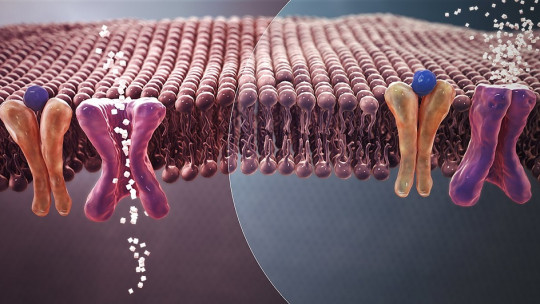
The sugar. A substance that hides in practically any food and that, over time, its consumption has increased to reach highly worrying levels. This concern is based on the large number of health effects that this sweet and addictive substance has.
One of these consequences is diabetes. Which, although it does not have to be highly harmful to the person, can become complicated. This is when the so-called diabetic neuropathies appear which we will talk about throughout this article.
what is the diabetic neuropathy?
Diabetes is a type of condition that is characterized by producing, in those who suffer from it, high levels of sugar in the blood. This excess glucose causes nerve deterioration, causing any of the types of diabetic neuropathy. Therefore, diabetic neuropathies are described as a set of nervous disorders caused by an excess of glucose in the blood and that usually causes deterioration of the nerves related to the lower extremities, although it can extend to other areas of the body.
The clinical picture of diabetic neuropathy can vary depending on the groupings of damaged nerves. These symptoms range from sensations of pain and numbness in the legs, gastric disorders or heart problems. Furthermore, the intensity of the symptoms can also differ from one person to another, since while in some cases the symptoms are very weak, In others they can be highly disabling and even fatal
Although diabetic neuropathy is a serious complication of a diabetic disease, its symptoms can be avoided or reduced in intensity if the person commits to maintaining a healthy lifestyle and having regular blood glucose checks.
This type of nervous disorder It affects 60-70% of the population that suffers from diabetes Although anyone with a diabetic disease is susceptible to developing neuropathy, the risk tends to increase with age and as the disease progresses. That is, the longer a person suffers from diabetes, the more likely they are to develop neuropathy.
However, this nervous alteration does not only affect diabetes patients, but can also appear in people who experience problems controlling blood sugar levels or in people who suffer from hypertension and who have a large amount of body fat mass. as well as in overweight people
Types of diabetic neuropathy and symptoms
As mentioned in the previous section, There are several types of diabetic neuropathies These four categories are distinguished according to the damaged nerves, as well as by presenting a different clinical picture or symptomatology.
It is necessary to specify that the different types of neuropathies are not exclusive. That is, the person may develop symptoms of the different types simultaneously or, on the contrary, their symptoms only belong to one of the neuropathies.
In most cases, symptoms appear and evolve progressively, with the danger of the person is not aware of them until the neuropathy has already caused significant deterioration
These four types of neuropathy are as follows.
1. Peripheral neuropathy
Peripheral neuropathy is the most common of all neuropathies. Initially, the person experiences a series of symptoms in the upper extremities, which Over time they spread to arms and hands and, in addition, they tend to get worse when night comes.
These symptoms are:
2. Autonomic neuropathy
As its name indicates, this second type of neuropathy affects the autonomic nervous system. As a consequence, the nerve cells that govern the functioning of organs such as lungs, heart, eyes or sexual organs can be highly damaged.
Among the symptoms of autonomic neuropathy we can find:
3. Neuropathy radiculoplexopathy
Also known as diabetic amyotrophy, this type of neuropathic alteration mainly affects the lower extremities; including the hips and buttocks. Symptoms usually only appear on one side of the body but they may disperse to each other.
The main symptoms are:
4. Mononeuropathy
This last type of neuropathy usually appears suddenly and is more typical of older people and is characterized by the deterioration of a specific nerve. The best known of the syndromes caused by mononeuropathy is carpal tunnel syndrome, whose symptoms are concentrated in the person’s hands.
Although symptoms may depend on which nerves are affected, mononeuropathy symptoms tend to decrease over time These symptoms include:
- Intense pain in the chest or abdomen.
- Pain in the lower back or pelvis.
- Pain in thigh.
- Calf or foot pain.
Causes and risk factors
As already mentioned throughout the article, the origin of neuropathies is found in a deterioration of nerve fibers caused by excessive blood sugar levels Although the exact reason for this association has not yet been determined, it is hypothesized that it is due to the complex interaction between nerves and blood vessels.
Excessive levels of glucose in the bloodstream can obstruct the function of the nerves, making it difficult for them to transmit signals. In addition, hyperglycemia can cause wear and tear of the capillary walls, also obstructing the delivery of nutrients and oxygen to the nerves
The conditions that can cause this increase in sugar levels are:
- An alteration of the autoimmune response that causes inflammation of the nerves.
- Genetic factors
- Toxic habits such as smoking and the consumption of alcoholic beverages.
In addition, there are a series of risk factors that can facilitate the appearance of any type of neuropathy:
- Lack of control of blood sugar levels
- Duration of diabetic disease.
- kidney diseases
- Overweight.
Treatment
At the moment it has not been possible to develop a treatment that completely alleviates the symptoms of neuropathies. However, very effective protocols have been developed with the following objectives:
- Reduce the progression of the disease by maintaining a healthy lifestyle, which allows the person to maintain adequate blood sugar levels.
- Ease the pain through medication or physiotherapy.
- Control of possible complications and restoration of functions through symptomatic treatment.
Thanks to these intervention guidelines, it is possible to improve the quality of life of people who suffer from neuropathy, who can lead a completely normal life.








